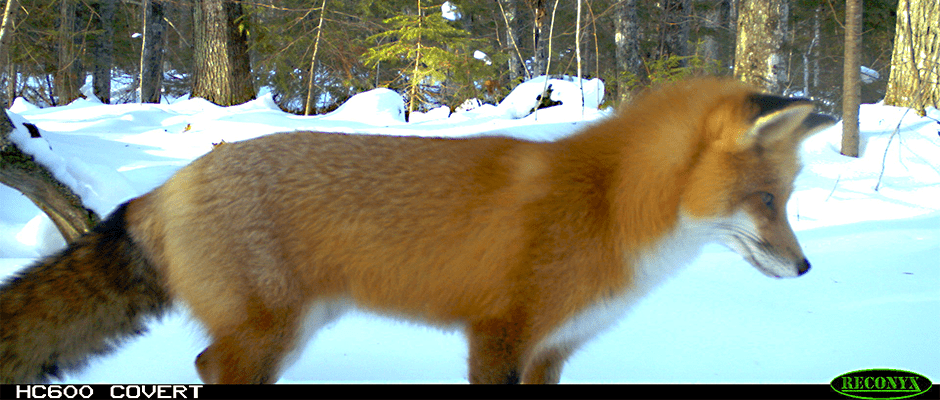Share this article
Cameras reveal carnivore communities on Wisconsin islands
Northern Wisconsin is home to a dozen terrestrial carnivores, from gray wolves (Canis lupus) to red foxes (Vulpes vulpes), but the populations on the Apostle Islands stretching from the Bayfield Peninsula into Lake Superior have long been unknown. The islands are remote, accessible to researchers only by boat and to mammals by either swimming the rough waters or by crossing treacherous ice bridges of varying stability in winter.
Which carnivores had made the journey? Biologists had no idea.
“In the beginning, we weren’t sure there would be many carnivores out there,” said Illinois Natural History Survey wildlife ecologist Max Allen, a TWS member. He led a three-year study with Tim Van Deelen of the University of Wisconsin and Erik Olson of Northland College. They used remote cameras to record the carnivores that appeared on the islands.
By stationing 160 camera taps on 19 of the 22 islands, they recorded 1,970 carnivore events, detecting 10 of the 12 terrestrial carnivores found in Wisconsin, including black bears (Ursus americanus), bobcats (Lynx rufus) and American martens (Martes americana), a state endangered species.
“We were really astounded by just how many carnivores there were,” Allen said. Carnivores appeared on 15 of the 19 islands they studied, from tiny Raspberry Island, at just over a square kilometer, to 40-square-kilometer Stockton Island, the only island where they recorded a single wolf.
“What we don’t know is how they get out there, how they move between islands — and even if they move between islands,” Allen said. “There are two options for these movements. They can either swim or travel across the ice. My best guess is that the method of travel depends on the species. A bear would have no problem jumping into the water and swimming to a new island, but a marten might have some trouble with that. But then there would also be some danger trying to cross the ice.”
The ice thickness and stability can be variable, Allen said, and that’s likely to become an increasing issue as climate change brings increased variability. “It’s likely going to depend year to year if the animals can move across the ice in any particular spot between islands,” he said.
Between 2014 and 2017, researchers captured more than 200,000 images, from four small islands which had just one carnivore species, to Stockton Island, with 10. Black bears appeared on 13 of the islands. More carnivores appeared in the summer than in the winter.
It proved to be a textbook case of island biogeography, Allen said. Most island biogeography studies have focused on more tropical climes, but the same principles proved true for the Great Lakes and for the carnivore community. Larger islands with more resources, and islands closer to the mainland, tended to have more diverse carnivore communities.
Next, Allen said, he’d like to see if individuals are moving between islands. “We might be really surprised by what we find,” he said.
Header Image: Researchers studying Apostle Island carnivores capture an image of a red fox. ©Max Allen/Erik Olson/Tim Van Deelen








